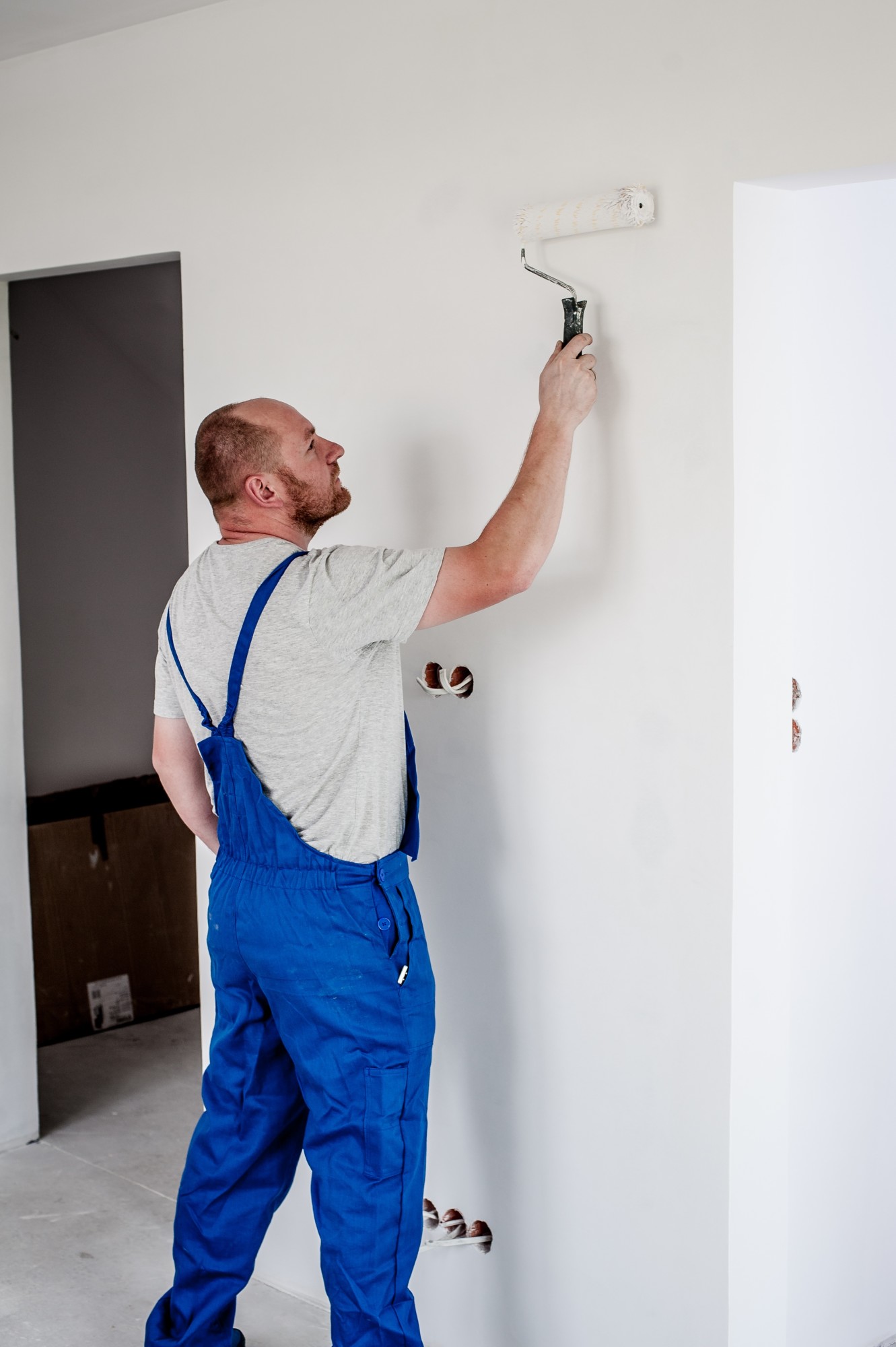
The Hidden Benefits of Professional Home Painting
While most homeowners recognize the aesthetic transformation that a fresh coat of paint can bring, there are numerous hidden benefits to professional home painting that go beyond mere appearance. This blog explores these lesser-known advantages, from enhanced home protection to the longevity of paintwork, and delves into why professional expertise is key to avoiding painting disasters.
Enhanced Home Protection
One of the often-overlooked benefits of professional painting is the added protection it offers to your home. Quality paint acts as a barrier, protecting walls from environmental elements like moisture and pests. Expert painters understand the importance of proper surface preparation and choose the right type of paint for different materials, ensuring a protective layer that extends the life of your siding, trim, and other surfaces.
Understanding how paint acts as a protective barrier for your home is crucial in recognizing the value of a professional painting job. Quality paint does more than just improve aesthetics; it plays a pivotal role in shielding your home’s surfaces from various environmental threats.
Paint as a Protective Shield
- Moisture Resistance: One of the primary functions of paint is to prevent moisture penetration. Water can be extremely damaging to a home, leading to issues like mold, mildew, and rot. A proper paint job seals surfaces, keeping moisture out and maintaining the structural integrity of the home.
- Sun and Weather Protection: Paint also protects against the sun’s harmful UV rays and other weather-related wear. Over time, exposure to the elements can degrade surfaces, causing them to crack, peel, or fade. Quality paint provides a layer of protection that minimizes this damage.
- Insect and Pest Deterrence: In certain environments, paint can help deter insects and pests from damaging your home’s exterior. This is particularly true for wood surfaces, which are vulnerable to termites and other wood-loving pests.

Choosing the Right Type of Paint
The effectiveness of paint as a barrier largely depends on choosing the right type for your specific needs. Here are some considerations for selecting the best paint for home protection:
- Acrylic Latex Paint: Known for its durability and weather resistance, acrylic latex paint is a popular choice for exterior surfaces. It’s flexible, which means it can expand and contract with temperature changes without cracking. This type of paint also provides good moisture resistance and is less prone to fading.
- Elastomeric Paint: This is a heavy-duty exterior paint that forms a thick, flexible layer, offering exceptional moisture protection. It’s ideal for surfaces that are prone to cracks, as it can bridge small gaps and prevent water intrusion.
- Oil-Based Paint: Oil-based paints are known for their superior adhesion and moisture resistance. They’re particularly effective on surfaces that are exposed to harsh conditions. However, they are less environmentally friendly and require more care during application and cleanup.
- UV-Resistant Paints: If your home is in an area with high sun exposure, consider UV-resistant paints. These paints are formulated to withstand UV radiation, helping to prevent fading and sun damage over time.
- Mold and Mildew Resistant Paints: In humid climates, or for parts of your home like bathrooms and kitchens, mold and mildew-resistant paints are essential. These paints contain additives that inhibit the growth of mold and mildew on the paint surface.
Professional Application for Maximum Protection
While choosing the right type of paint is essential, the application process is equally important in ensuring the paint serves as an effective protective barrier. Professional painters not only select the best type of paint for your home’s specific needs but also ensure that it is applied correctly — with proper surface preparation, priming, and application techniques. This expert approach guarantees that the paint adheres properly and provides the maximum level of protection for your home.

Is the Longevity of Paintwork Effected When You Choose Professionals?
Professional painters bring expertise in surface preparation, application techniques, and quality materials, all of which contribute to the longevity of your paint job. They know how to address issues like mold growth, peeling, and cracking, which are common in DIY paint jobs. By choosing professionals, you’re investing in a paint job that not only looks great but also lasts longer, saving you money and hassle in the long run.
The longevity of paintwork on your home is a critical factor that influences not just the appearance, but also the long-term maintenance and cost-effectiveness of the painting project. Professional home painting plays a vital role in ensuring that your paint lasts as long as possible, providing enduring beauty and protection.
Importance of Surface Preparation
One of the key elements that professional painters focus on is thorough surface preparation. This step is crucial for the paint’s longevity and includes:
- Cleaning: Removing dirt, mold, mildew, and old, flaking paint. A clean surface ensures that the new paint adheres properly.
- Repairing: Filling cracks, patching holes, and smoothing out uneven surfaces. This prevents paint from peeling or chipping due to underlying surface issues.
- Priming: Applying a primer to provide a suitable surface for the paint to adhere to, especially important for surfaces that have never been painted or have been exposed to severe conditions.
Quality of Paint Used
Professionals understand the importance of using high-quality paint. Higher quality paints contain better pigments, binders, and other ingredients that contribute to a longer-lasting finish. These paints:
- Adhere better to surfaces.
- Are more resistant to fading and weathering.
- Offer better coverage with fewer coats.
- Are more durable against wear and tear.
Expert Application Techniques
The techniques used in applying the paint significantly affect its durability. Professional painters have the expertise to apply paint in a way that maximizes its protective and lasting qualities. This includes:
- Even Application: Ensuring the paint is applied evenly, avoiding drips and streaks that not only look unsightly but can also lead to uneven wear.
- Correct Thickness: Applying the paint at the right thickness is vital. Too thin, and it won’t last long; too thick, and it may crack or peel.
- Attention to Detail: Professionals are meticulous in their approach, covering all nooks and crannies, and ensuring areas prone to wear are adequately protected.

Proper Timing and Weather Conditions
The timing of the paint application and the weather conditions play a significant role in the paint’s longevity. Professional painters understand the importance of painting under optimal conditions. They avoid extreme temperatures and humidity, which can affect how paint cures and adheres to the surface.
Regular Maintenance
After the paint job is complete, professionals can provide advice on maintaining the paintwork to extend its lifespan. This includes regular cleaning, prompt touch-ups as needed, and inspections for any signs of wear or damage.
The longevity of your home’s paintwork is not just about the paint itself but also about the expertise and attention to detail that goes into its application. By choosing professional home painting services, you are not only enhancing the immediate appearance of your home but also investing in its long-term protection and beauty. Professional painters bring a level of care and expertise that ensures your paintwork remains vibrant and durable for years to come.

Convenience and Efficiency of Professional Home Painting
The convenience of hiring professional painters cannot be overstated. They handle every aspect of the project, from preparing the surfaces and choosing the right products to the actual painting and cleanup. This saves you considerable time and effort, allowing you to focus on other important aspects of your life. Professionals also work efficiently, completing the project in a fraction of the time it would take to do it yourself.
Ensuring Consistent Quality and Professional Finish
Professional painters have the skills, tools, and experience to deliver a high-quality finish that is difficult to achieve with DIY efforts. They ensure consistent texture and color coverage, with crisp lines and no missed spots. This level of detail contributes to an overall superior look that enhances the beauty and value of your home.
A professional finish in home painting is not just about applying a new color; it’s about achieving a level of quality and consistency that enhances the overall look and feel of your home. Professional painting services are key to this outcome, bringing expertise, precision, and attention to detail that go beyond the capabilities of the average DIY project.
Mastery of Techniques and Tools
Professional painters have a deep understanding of the various techniques required for different types of painting jobs. Whether it’s smooth, even coats on large wall surfaces, detailed trim work, or textured finishes, professionals have the skill to execute these techniques flawlessly. They are also equipped with the right tools for every job, from high-quality brushes and rollers to professional-grade sprayers, ensuring a superior finish.
Knowledge of Paints and Materials
Understanding the properties of different paints and materials is crucial for a professional finish. Professionals know how to choose the right type of paint for each surface, considering factors like durability, sheen, and the paint’s reaction to environmental conditions. This expertise extends to the selection of primers, sealers, and finishes, all of which contribute to the final look and longevity of the paint job.
Attention to Detail
A hallmark of professional painting is the meticulous attention to detail. This includes precise cutting-in at edges, smooth application to avoid brush strokes and roller marks, and careful preparation to prevent paint from bleeding onto unintended surfaces. Professionals also ensure uniform coverage, matching the texture and color perfectly throughout the space.
Efficient and Clean Work
Professional painters not only deliver quality results but also maintain a clean and organized work environment. They take measures to protect your furniture and flooring, ensure proper ventilation, and clean up thoroughly after the job is done. This level of professionalism extends beyond the painting itself, offering a hassle-free experience for homeowners.

Quality Control
Throughout the painting process, professional painters engage in quality control measures. They inspect their work as they go, ensuring that each layer of paint is applied correctly and meets high standards. Any potential issues are addressed immediately, rather than being overlooked or left for later correction.
Adapting to Challenges
Professional painters are adept at handling the various challenges that may arise during a painting project. This includes working with uneven surfaces, dealing with weather conditions for exterior jobs, and making adjustments when unexpected issues, like hidden wall damage or moisture problems, are uncovered.
Avoiding DIY Disasters
DIY home painting projects can seem appealing, often perceived as a cost-effective and satisfying endeavor. However, without the necessary skills and preparation, these projects can lead to a range of problems. Understanding these common DIY disasters and how to avoid them is crucial for homeowners.
The Risks of DIY Painting
While DIY painting projects may seem like a cost-effective solution, they come with significant risks. Common DIY painting disasters include uneven application, drips and streaks, and selecting inappropriate paint types or colors. Additionally, without proper safety measures, painting can pose risks, especially when working on exteriors or in hard-to-reach areas.
The Value of Professional Help
Professional painters are equipped to handle these challenges effectively. They have the right tools and safety equipment to manage high or difficult-to-reach areas, ensuring a safe and high-quality finish. Their experience and expertise in color selection and application techniques also mean that the end result is aesthetically pleasing and free of common painting errors.

1. Poor Surface Preparation
One of the biggest mistakes in DIY painting is inadequate surface preparation. This can lead to paint peeling, bubbling, or not adhering properly.
How to Avoid: Thoroughly clean and repair the surfaces you plan to paint. Remove old paint, fill in holes and cracks, sand rough areas, and ensure the surface is clean and dry before you start painting.
2. Using the Wrong Type of Paint
Choosing the wrong type of paint for a particular surface or environment can result in a finish that doesn’t last or doesn’t look as expected.
How to Avoid: Research and select the right type of paint for your specific project. Consider factors like the room’s function, surface material, and exposure to elements. Don’t hesitate to ask for advice at paint stores.
3. Inconsistent Color and Finish
Mismatched colors and uneven finishes are common in DIY projects due to poor mixing, inadequate coverage, or incorrect application techniques.
How to Avoid: Thoroughly mix your paint to ensure consistent color. Apply multiple thin coats rather than one thick coat for even coverage. Use the right brushes or rollers for the type of paint and surface.
4. Messy Edges and Paint Bleeds
A lack of precision, especially around edges, corners, and trim, can lead to a messy, unprofessional look.
How to Avoid: Use quality painter’s tape to protect edges and create clean lines. Be sure to press the tape down firmly to prevent paint from bleeding underneath.
5. Drips and Streaks
Drips and streaks are often the result of overloading the brush or roller with paint or applying paint unevenly.
How to Avoid: Use the right amount of paint on your brush or roller. Apply paint in smooth, even strokes, and regularly check for and smooth out drips or streaks as you go.
6. Ignoring Safety Precautions
Painting, especially in high or hard-to-reach areas, can pose safety risks. Additionally, the fumes from certain types of paint can be hazardous.
How to Avoid: Use sturdy ladders and scaffolding for high areas, and always follow safety guidelines. Ensure good ventilation, particularly when using oil-based paints or stains.
7. Underestimating Time and Cost
DIY projects often end up taking more time and costing more than initially expected, especially when mistakes occur.
How to Avoid: Plan your project carefully. Allow ample time for each phase, including preparation, painting, and drying. Budget for unexpected expenses, like additional paint or tools.
While DIY painting can be rewarding, it’s important to be aware of the potential pitfalls. Proper preparation, using the right materials, and paying attention to detail are key to a successful DIY paint job. However, for many, the expertise, efficiency, and peace of mind that come with professional painting services are invaluable. Professional painters bring a level of skill and experience that can save time, money, and frustration, ensuring a high-quality finish that enhances the beauty and value of your home.
Choosing professional home painting services offers a range of hidden benefits that go far beyond the surface. From enhancing your home’s protection and ensuring the longevity of the paintwork to providing convenience and avoiding common DIY pitfalls, the value added by professional expertise is undeniable. If you’re considering a painting project for your home, tapping into the skill and knowledge of professional painters can make all the difference in achieving a beautiful, long-lasting, and trouble-free result.
